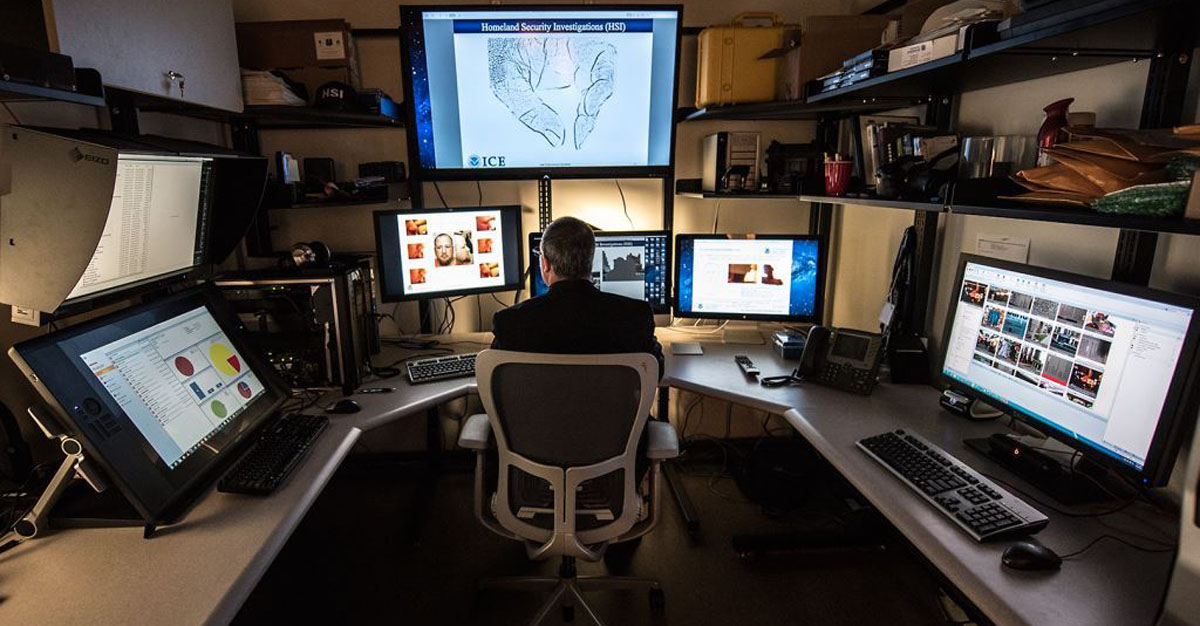Archived Content
In an effort to keep ICE.gov current, the archive contains content from a previous administration or is otherwise outdated. This information is archived and not reflective of current practice.
The route to locating child predators is often through identification of their victims
More than a decade before the Internet transformed the way we live, science fiction writer William Gibson, who coined the term “cyberspace,” was churning out prescient stories centered on scoundrels using high technology.
Gibson’s futuristic works of fiction are now a reality with a wide range of criminal activity taking place online, including the heinous and prolific crime of child sexual exploitation.
“Child pornographers are clever when it comes to remaining anonymous while committing crimes against children from their personal computers,” said Executive Associate Director Peter T. Edge of U.S. Immigration and Customs Enforcement’s (ICE) Homeland Security Investigations (HSI). “But ICE is getting better and more sophisticated in our techniques to uncover their devious schemes and monstrous deeds.”
A lot of child pornographers are drawn to the Tor, or the Onion Router. It’s very difficult to track and identify child predators going through the Tor because the network is routed through thousands of relays across the globe and, therefore, identities are masked.
HSI, however, cracked a case in which 14 men were arrested for operating a child pornography website from the Tor. As a result of Operation Round Table, investigators dismantled an underground child exploitation enterprise in which men, posing as women, coerced young boys on social media sites to engage in sexually deviant behaviors. In March 2014, Department of Homeland Security Secretary Jeh Johnson announced that the coordinated strike from ICE and partnering agencies led to the identification of 251 victims in 39 states and five foreign countries.
In another case, HSI computer forensic analysts scrutinized photographic clues (including a prescription bottle and the make and model of a vehicle) and identified a toddler in the photo being sexually abused. As a result of this case, investigators identified 15 children who Stephen A. Keating of Jesup, Georgia, had sexually abused. Keating was sentenced to 110 years in prison and ordered to pay $1.2 million in restitution to his victims.
In fiscal year 2013, HSI investigations led to the identification of 927 victims of child sexual exploitation (589 girls and 338 boys). In fiscal year 2014, the numbers increased. HSI investigations led to the identification of 1,036 victims of child sexual exploitation (522 girls and 514 boys).
ICE is combating child sexual exploitation through many methods, including the Victim Identification Program (VIP), launched in late 2011. The VIP is a simple idea that combines traditional investigative techniques with the robust and growing technology of HSI’s Cyber Crimes Center (C3).
Each process begins when HSI computer forensics agents are given material (images, video and/or audio) that shows a child or children being sexually abused. The material is enhanced and analyzed to look for clues that could identify the victim, suspect or geographic location. When enough clues form a viable lead, that lead is sent to the appropriate HSI field office for follow-up investigation.
“It’s important to note that the focus on victims does not conflict with ongoing efforts to arrest and prosecute the perpetrators of these horrendous crimes,” said HSI Special Agent Jim Cole, who serves as the VIP’s national program manager. “The identification of victims often leads to the arrest of their abusers.”
C3 is currently providing a two-week victim identification training session to agents and analysts who’ve come from 14 HSI field offices from all over the country. Attendees are working on real cases as part of the training.
The VIP comes under the Child Exploitation Investigations Unit of C3. Located in Fairfax, Virginia, C3 brings together ICE cyber investigations and computer forensics to combat the global battle against cybercrime. On July 22, C3 celebrated the completion of a major renovation and expansion designed to enhance its operational and training capabilities.
For safety tips to protect children online, click on Online Resources to Prevent Child Exploitation.
More information on how HSI’s C3 combats criminal activity conducted on or facilitated by the Internet.


